The hips and the IT band are common sources of pain when cycling.
The iliotibial band (ITB) is a tendinous sheath of connective tissue that originates on the iliac crest (hip bone) and runs down the outside of the thigh to the lateral condyle of the tibia (outer shin).
The hip consists of the ball and socket hip joint and the hip flexor muscles, which connect to the femur (the top of the thigh bone).
In this article, we’ll explain what the IT band and hips do when we cycle and which symptoms might signal something’s going wrong.
Then we’ll suggest how to prevent and treat IT band and hip pain from cycling.
As with the most common causes of pain caused by cycling, if you’re feeling sharp pain off the bike, please seek expert advice.
What is the role of the IT band?

The iliotibial band has an important job stabilising the knee. It’s influenced by several muscles around the thigh region, such as the tensor fasciae latae, or TFL, at the top of the hip, glutes and quadriceps.
Bianca Broadbant, a physio and bike fitter from Fit Your Bike, explains that the TFL contracts to produce force. The IT band transmits the force to the outside of the knee while also enabling the hip to flex.
What are the causes and symptoms of IT band pain?

Although people often refer to IT band pain, the IT band itself cannot be injured. IT band issues originate elsewhere.
When the hips, glutes and hamstrings become fatigued or tight from the repetitive workload of cycling, they affect the position of the IT band. A change of equipment or bike position can also cause this.
The IT band is not designed to stop the knee tracking inwards or outwards during the pedal stroke. However, it can step in to compensate for a lack of stability in surrounding muscles.
This is another cause of IT band-related knee pain, according to Dan Guillemette, physio at Team Jayco Alua and Team Bike Exchange-Jayco.
Over time, misalignment of the IT band causes muscle imbalances or IT band syndrome, felt as pain on the outer knee. A bursa (fluid-filled sack) below the tendon connecting the band to the knee becomes inflamed.
Broadbent says the irritation is now believed to be caused by the IT band compressing the bursa, not rubbing against it as previously thought.
What do the hips do when we pedal?
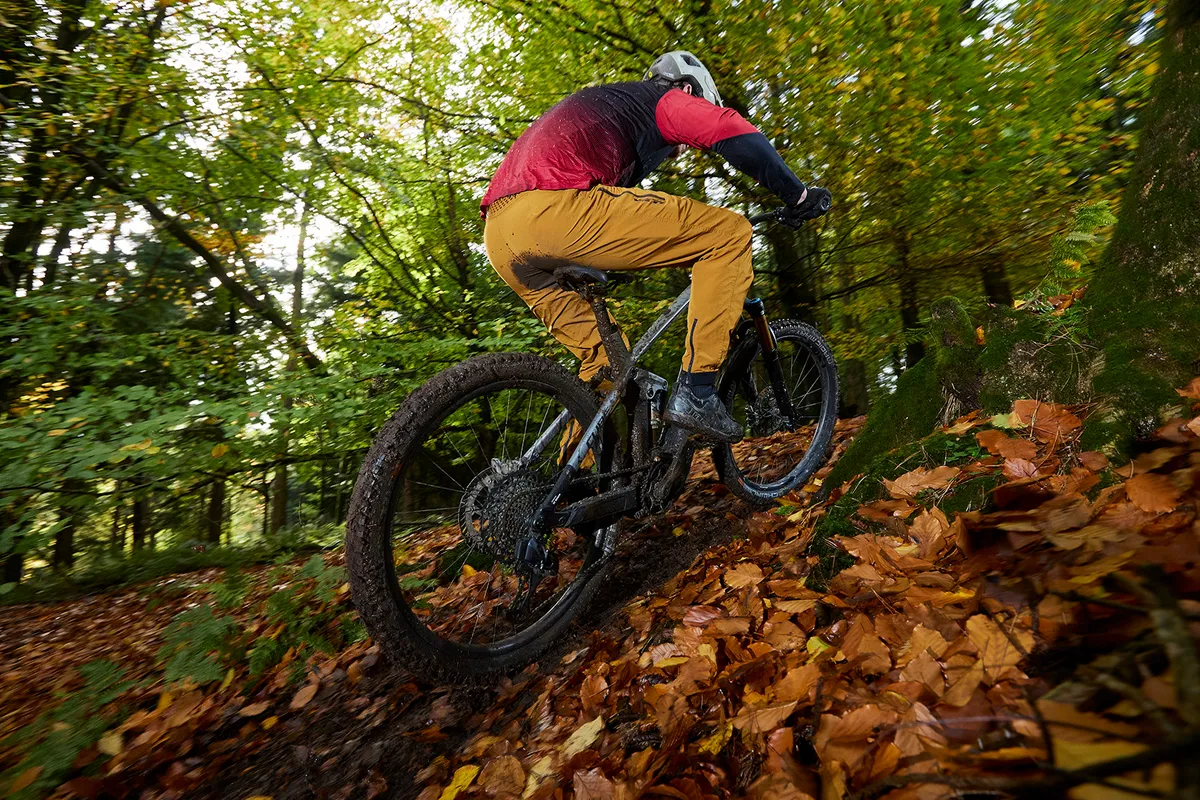
The hip flexors help to bend the hips, moving our knees upwards as we pedal.
Guillemette says the hips are the “fulcrum” between your shoulders, which your hands support on the handlebars, and your feet, which apply power from your legs through the pedals.
To act as a fulcrum, the hip muscles must stabilise the hips, keeping them in “linear symmetry” (square and level). This ensures we pedal smoothly and fluidly.
What are the causes and symptoms of hip pain from cycling?
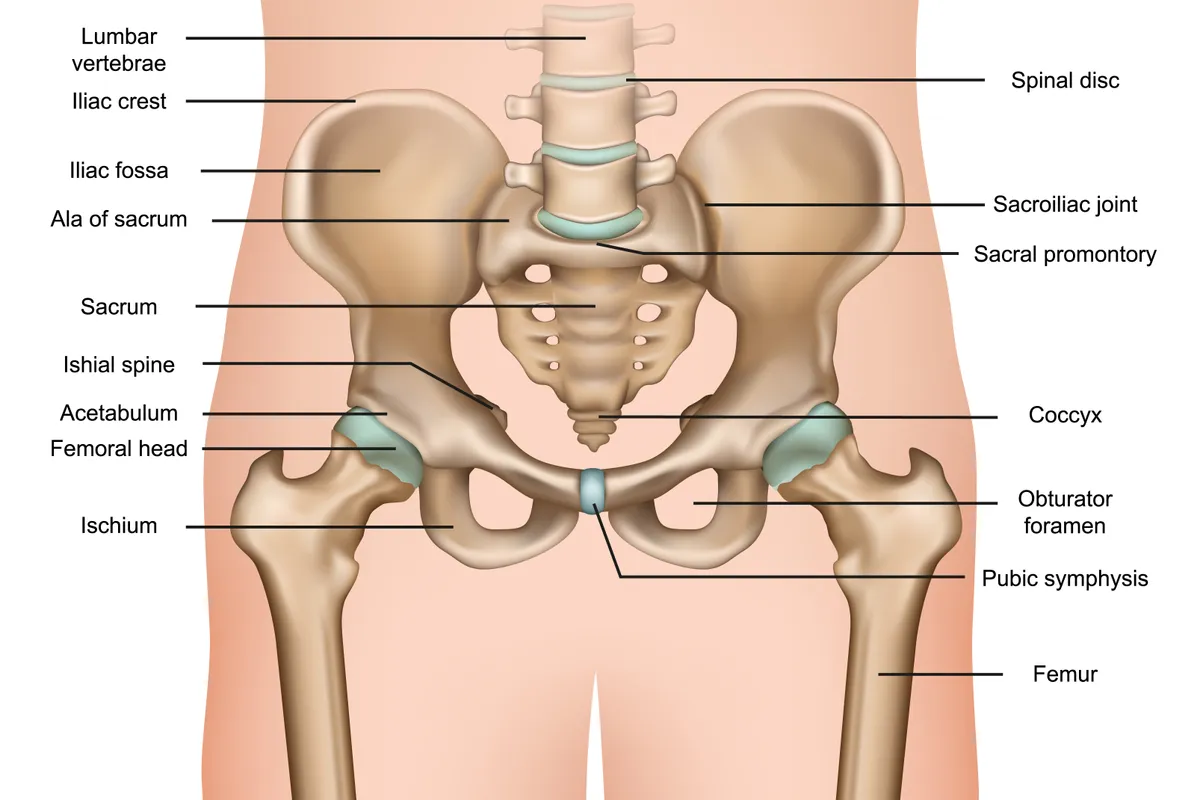
Guillemette says there are two kinds of cycling hip pain. Impingement of the hip joint is most common among people who have transitioned to cycling and may have joint damage from playing other sports.
The impingement restricts how the ball-shaped femur bone moves in the hip socket.
Guillemette, formerly of Team Sky, says anterior and medial pain at the front of and deep into the groin indicates something is awry in the joint.
The discomfort is often sharp because the impingement is bone on bone. This will usually be felt on and off the bike.
The second genre of hip issue arises when tight or weak hips cannot fulfil their stabilising function. This can lead to lower-back pain.
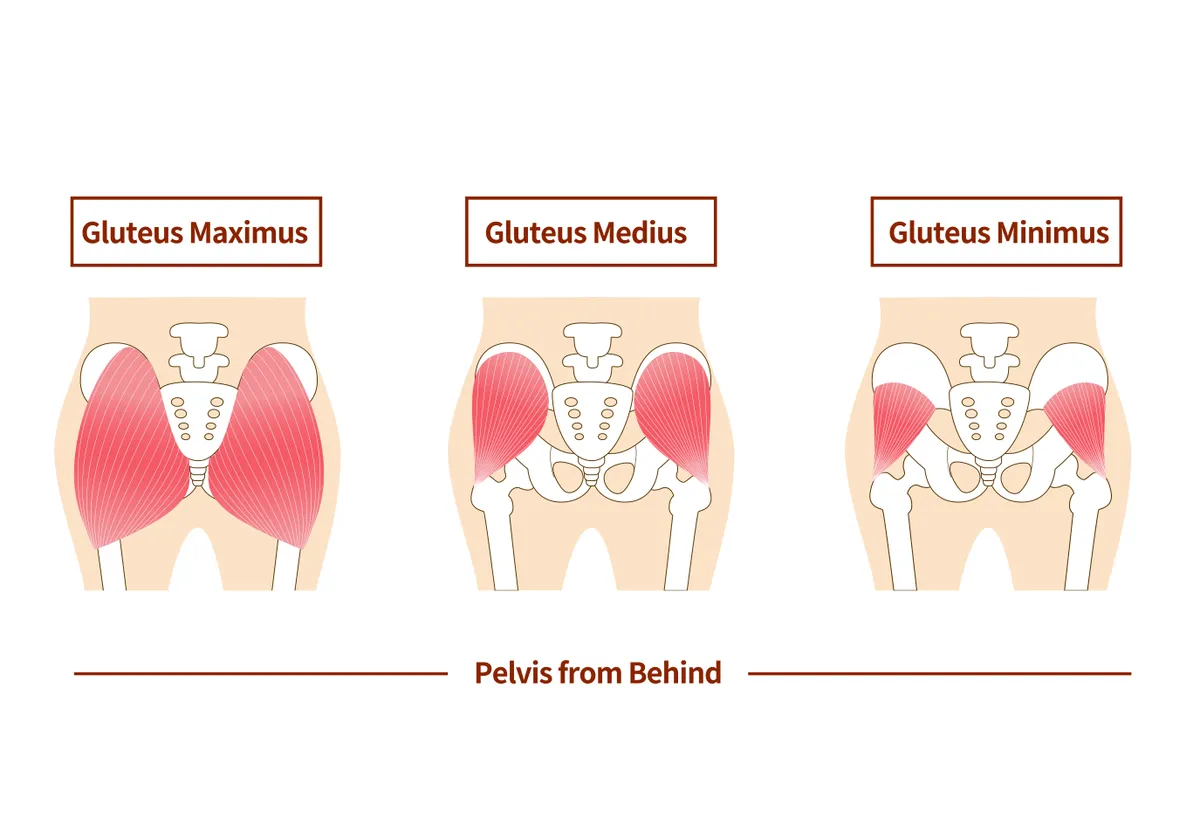
“When external muscles around your hips like the posterior gluteus medius, which maintain good alignment of your lower limbs, start to fatigue you start to lose control around that area.
“Then as you're applying power, the knee starts coming in and then you start rotating more.
“Instead of being symmetrical on the seat, one hip is being pulled forward and the other one is being pulled back. Your pelvis and sacrum start looking like an X.”
This causes “constant counter strain, which overloads your glutes and hamstrings, so they will get tight,” Guillemette says.
Subsequently, this reduces knee flexion and the power of your pedal stroke.
As your pelvis tilts, you will flex your lumbar spine more in an attempt to keep your hips level.
Guillemette adds: “Spending more time in extreme lumbar flexion inhibits other muscles from working efficiently to provide stability.”
At the same time, weak glutes, hamstrings and core muscles inhibit effective hip flexion, according to Guillemette. So getting stronger legs for cycling and doing core training for cyclists is a good idea.
This second type of hip pain tends to be a duller, muscular ache felt while cycling, often towards the end of a hard training block or ride, Guillemette says.
How to prevent IT band syndrome
Broadbent believes it’s inaccurate to describe the IT band as being tight.
“It's not contractible and generally it's kind of agreed that it's a fixed length,” she says.
Therefore, the goal of her treatment is to reduce compression of the IT band and not try to stretch it.
Positioning on the bike

Bike position, particularly getting your saddle height right, is key to decompressing the IT band, according to Broadbent.
“If your saddle is too high that might increase the compression the iliotibial band generates around the outside of the knee.
“If the saddle’s set too far back, [you will experience] higher levels of internal rotation and adduction of the hips. These kinds of knee motion potentially cause increased compression."
A wider stance width on the bike can alleviate compression, but Broadbent warns going too wide can lead to adduction or internal rotation of the knee – another potential cause of compression.
Cleat positioning also plays a role. Broadbent says cleats that direct the toes inwards could increase IT band compression.
A wider stance width or Q-factor could be better for the IT band, but not always. “Because you might have some with a narrow pelvis and going wider increases the compression,” Broadbent says.
Stretches
The IT band is a connective tissue, so cannot be stretched like a muscle.
But Guillemette says stretching and strengthening glutes and the outer hip muscles can mitigate against IT band syndrome. This is because all these muscles blend into the IT band.
Foam rolling
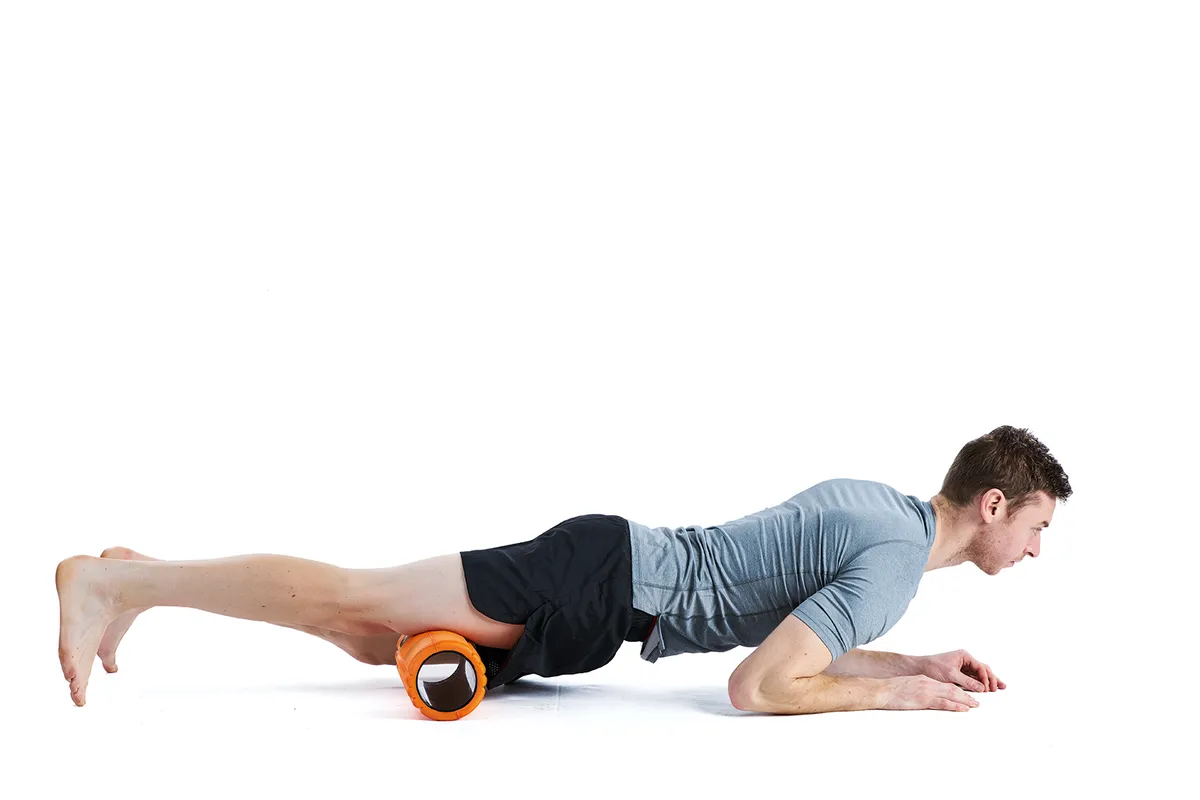
Massaging and foam rolling the IT band divides opinion among physios. Bianca Broadbent says that, like stretching, foam rolling the IT band is futile.
But others think it can reduce tension and alleviate pain on the outside of the knee.
Laurence Plant, specialist chiropractor and clinic manager at Henley Practice, advises using a foam roller to massage the outer side of your thigh and the lateral portion of your hip.
“Try to find all the tender spots and release these out,” says Plant. Aim for 3x 60 seconds per leg.
Dan Guillemette says rolling the IT band becomes less painful if done regularly. But, like stretching, if you only do it after a long ride, the benefit will largely be psychosomatic.
Paul Hough, a sport and exercise scientist at Oxford Brookes University, doesn’t advise directly rolling the IT band. Instead, he recommends targeting the surrounding muscles, particularly the quadriceps and the tensor fasciae latae or thigh muscles.
Increase workload steadily
Broadbent says even professional riders can encounter IT band syndrome after suddenly ramping up mileage.
As a result, she advises against amateurs going from five hours a week to 20 hours without progressing gradually.
Guillemette agrees that the core and hip muscles are “endurance muscles”, so need time to adapt to higher volume.
Strengthening
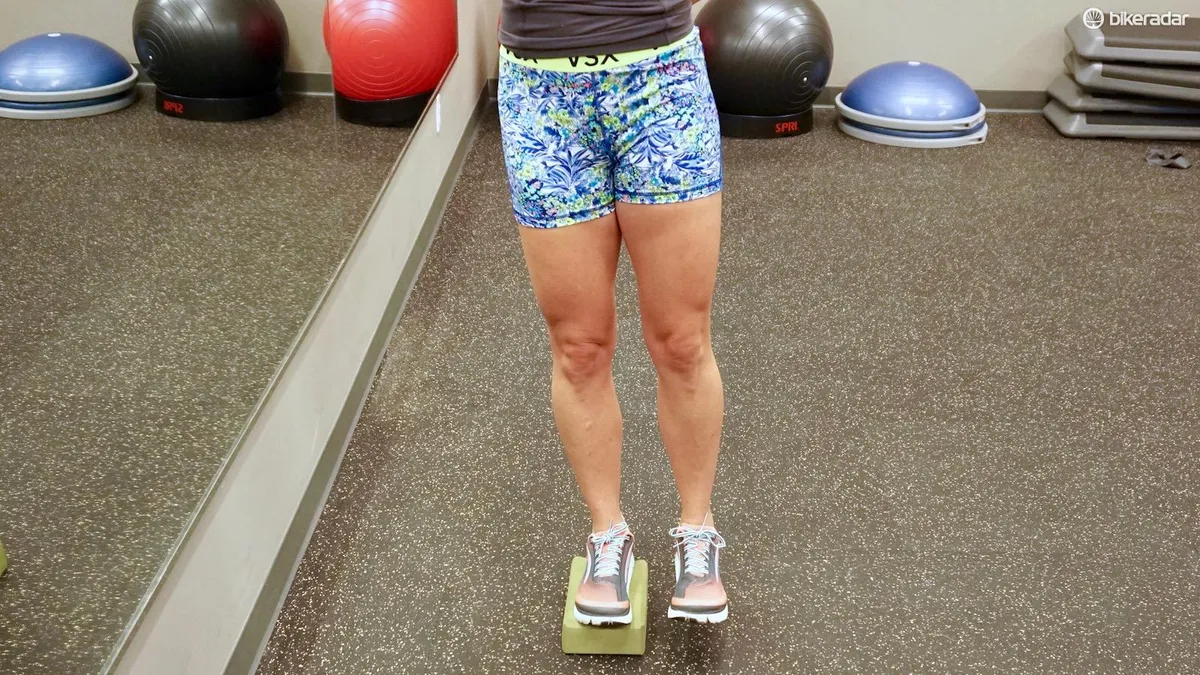
If adduction or internal rotation of the hip is compressing the IT band, Broadbent recommends strengthening the muscles that externally rotate the hip. These include the gluteus medius and gluteus maximus.
Broadbent says you should train the muscles in the range you use them on the bike. She suggests leg presses, lateral step-ups and side planks.
How to treat hip pain from cycling
Bike positioning

If a patient’s hip is impinged due to a joint issue, Guillemette adjusts their bike fit to open their hip angle while pedalling.
He says hip-impinged riders tend to kick their knees out to the side, which can cause lateral knee pain, because their hip joint lacks the range to bring the knee up higher and straight.
Decreasing crank length by a couple of millimetres and raising the saddle height can give a rider more room to bring their hips through in the upstroke.
Tweaks to bike geometry at the front end, such as shortening the reach and raising the stack, can also ease pressure on the hips.
Running your saddle too high destabilises the hips, Guillemette says, as they rock side to side.
Setting up your cleats wider can also give more space for restricted hips to push through.
Hip stretches

Guillemette recommends trying general hip flexor stretches to see which most effectively alleviate your hip pain.
He emphasises the importance of doing stretches to improve flexibility and level up muscular imbalances before strength training for cycling. If not, you’re likely to strengthen in an unbalanced way.
Exercises to increase hip strength and flexibility
Hip rotations
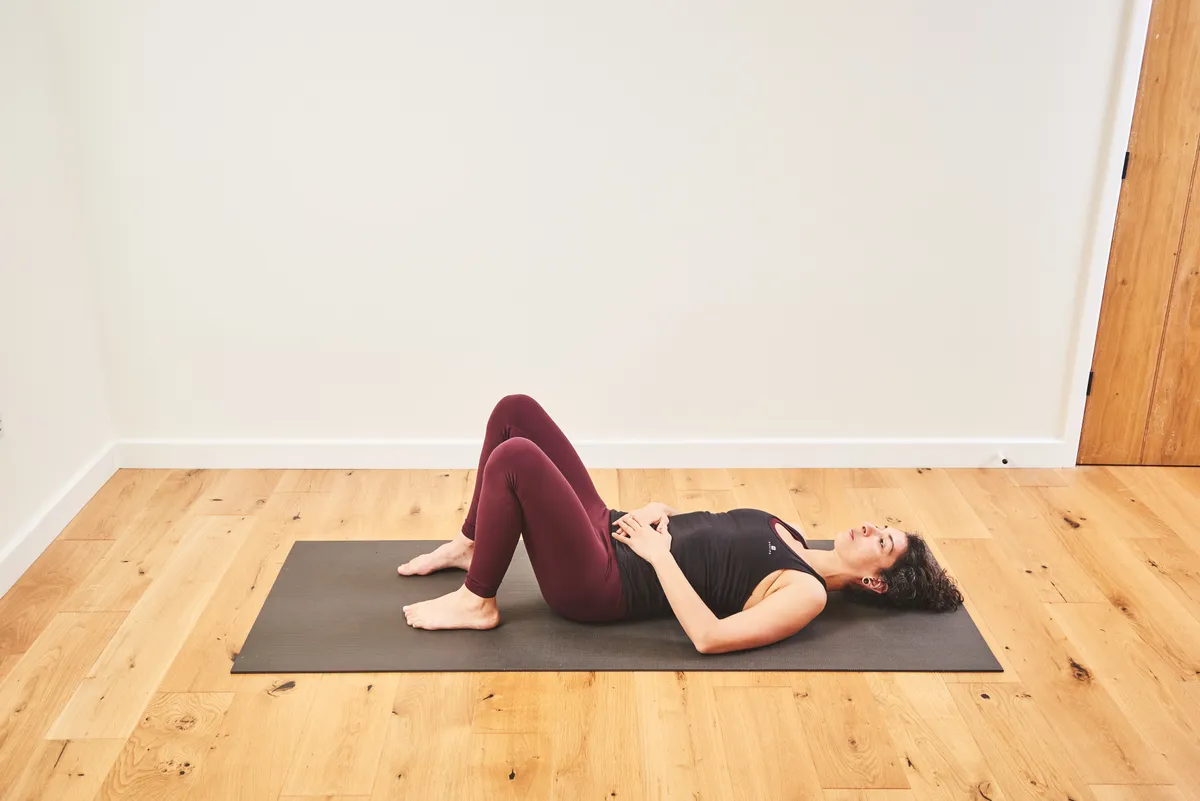
Lie on your back with both knees bent. Cross one ankle over the opposite knee. Now move in and out of the stretch by rotating the hip in and out.
To enhance the hold, use your hand to press down on your knee. Aim for 3x 10-second holds per leg.
Clam shells

Lie down on your side with your knees bent at 90 degrees and, with a resistance loop around your knees, lift your top knee away from your bottom knee, so that you create a ‘clam shell’ movement.
“You should feel the posterior (back) part of your glutes activating,” says Plant.
Aim for 3 sets of 12 reps and increase the resistance level as your strength develops.
Hip flexor / quad stretch

Sports therapist Jamie Webb suggests tweaking a routine quad stretch. Pull your foot up behind your backside to feel a stretch in the quads.
From that point push the pelvis up and out, like a pelvic thrust. Hold for 20 to 30 seconds on each leg.
This should increase the stretch through the quadriceps and hip flexors, and is ideal for targeting tight quads and knee pain.
Cycling-specific hip exercises
Guillemette prescribes exercises that improve the range of movement of the posterior chain muscles – from the back down to the hamstrings.
He favours functional mobility exercises that replicate the movement we do on the bike.
He advises doing a 10-minute circuit of the following moves several times a week, as well as a longer session if you have the time and will.
Good mornings
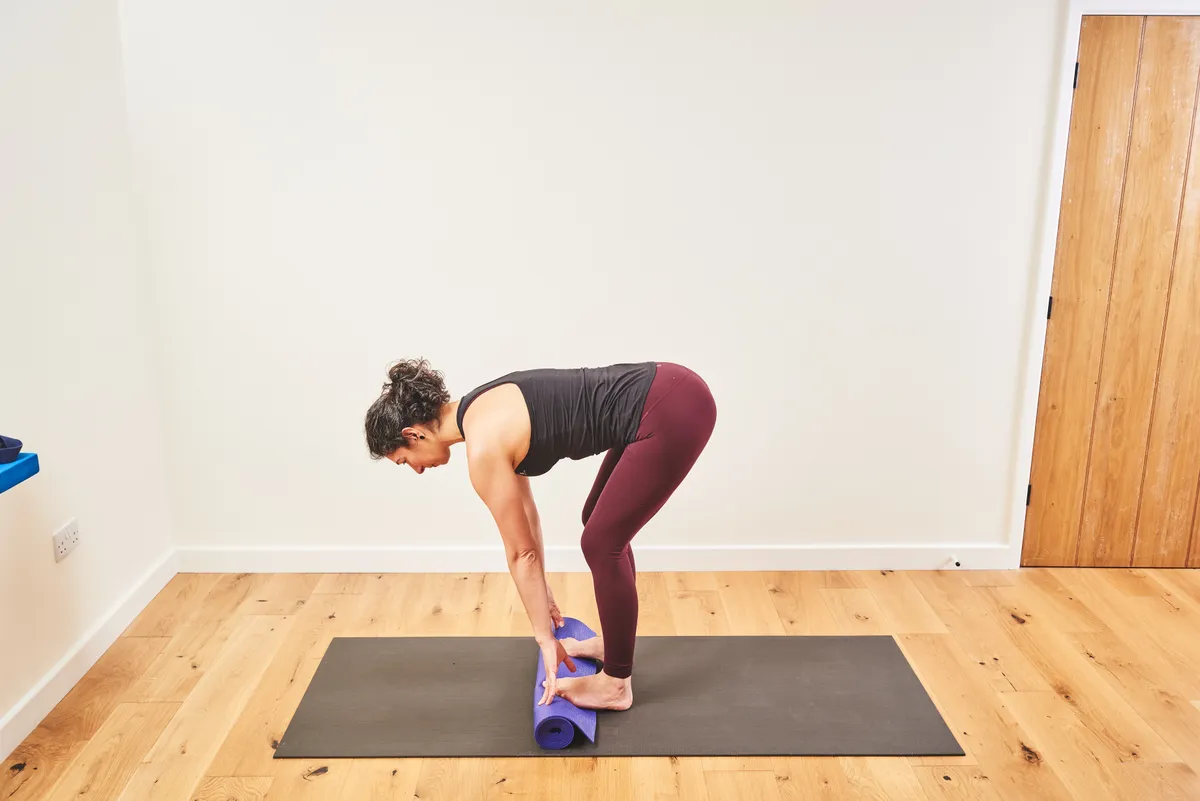
Also known as hip hinges, good mornings work your entire posterior chain. Bend at the hip below 90 degrees then slowly raise your back to vertical.
Add resistance bands or hold weights to increase difficulty.
Bird dogs
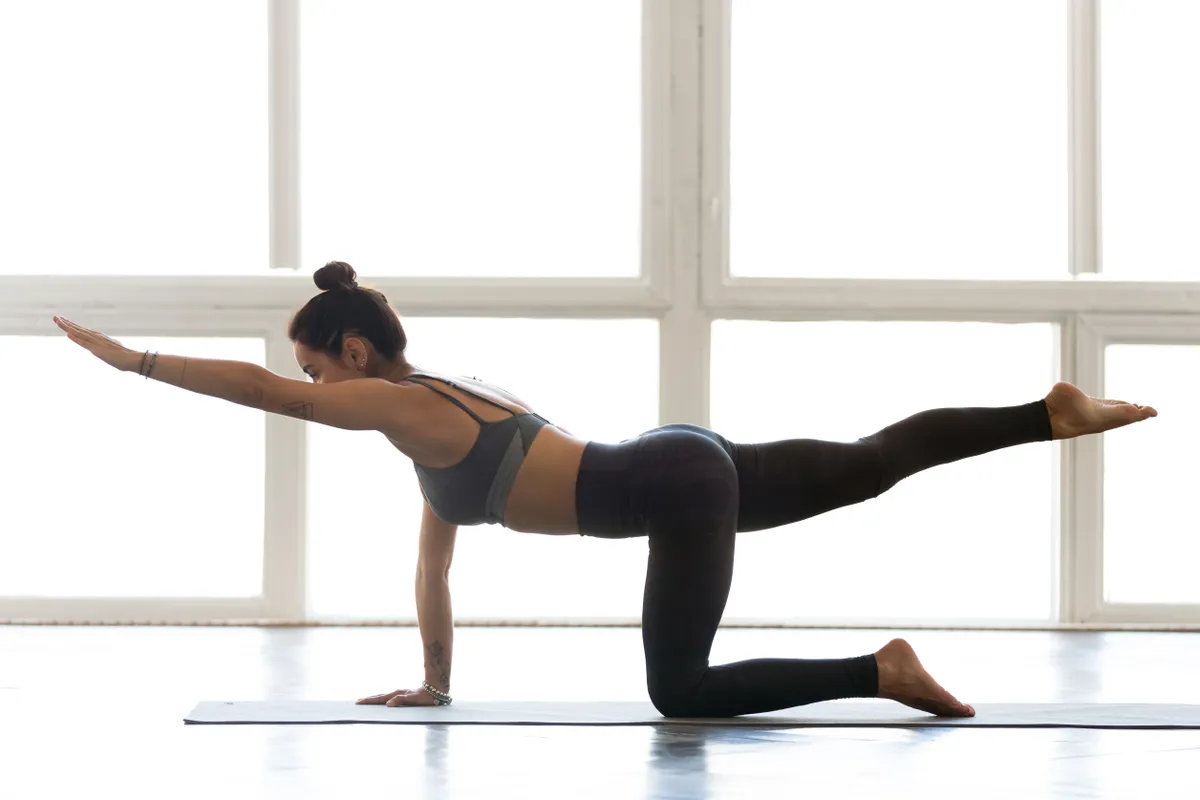
Starting on all fours, straighten one arm and the opposite leg simultaneously. Hold in a perpendicular position then bring them slowly back to the starting position. Switch to the other sides.
Perform two to three sets of 10 reps.
Dead bugs
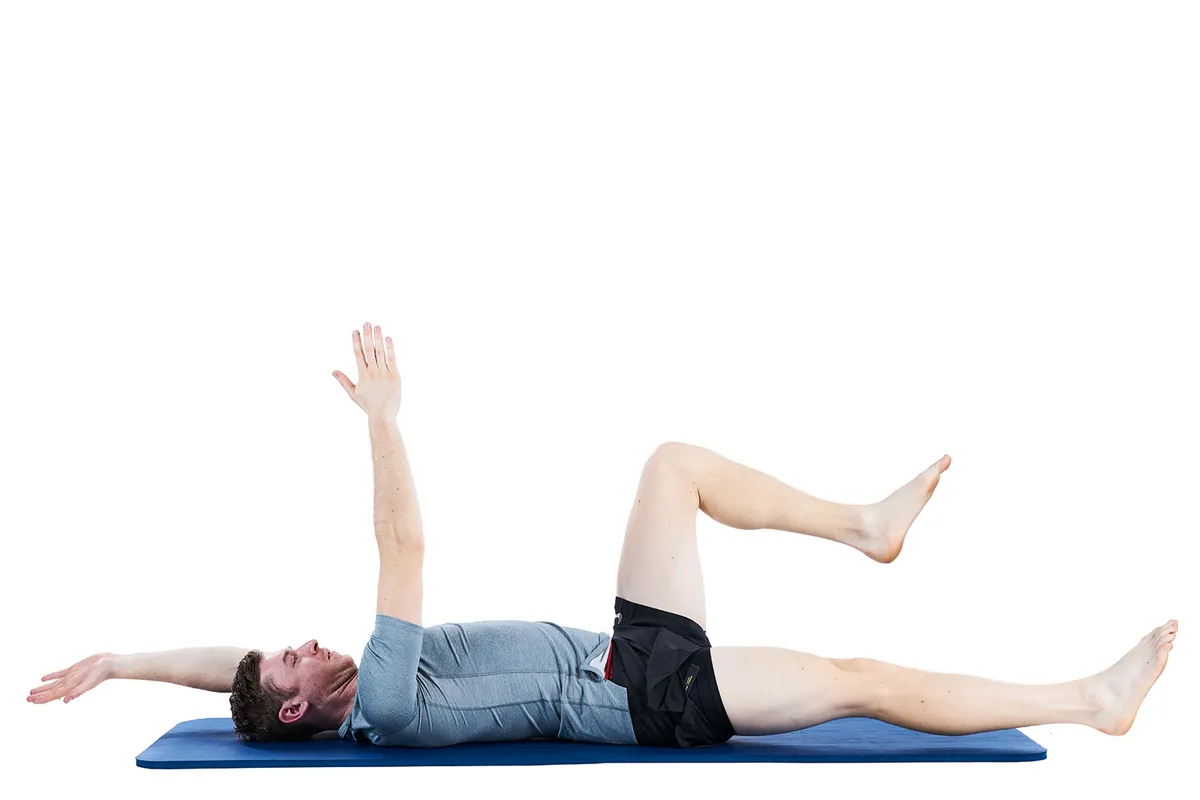
Lying on your back, lift and flex one leg to 90 degrees while bringing forward the opposite arm. Lower both limbs to the start point then do the same on the other side.
Do two to three sets of eight reps.
Thread the needle
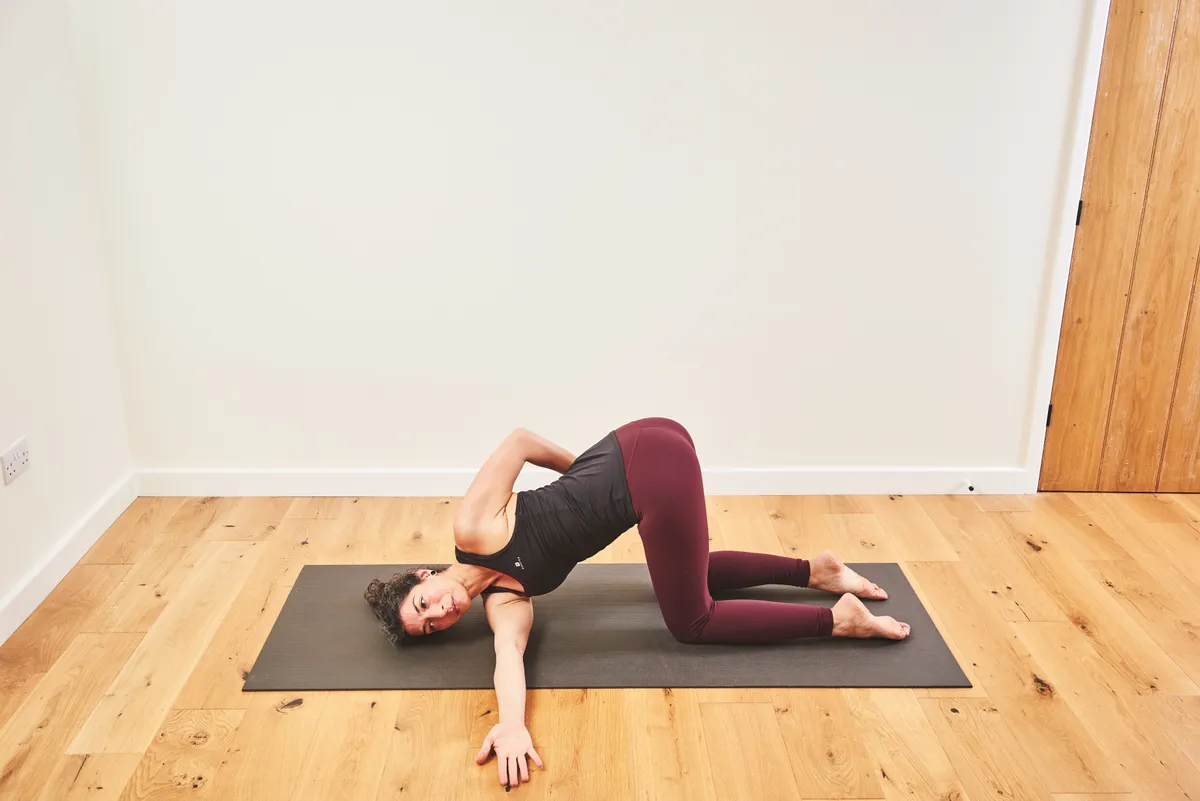
Threading the needle is an excellent thoracic spine exercise.
In a kneeling position, pass one straightened arm below the opposite armpit. Hold for a few seconds then lift the same arm while rotating your shoulder and spine. Hold the arm as high as you can. Then repeat with the other arm.
Do eight to 10 reps two or three times.
